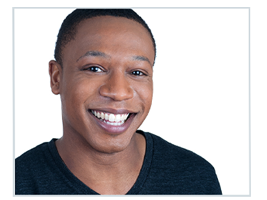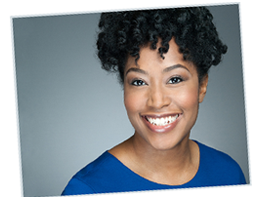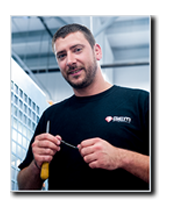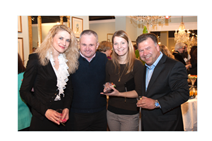Tips to Improve Your Photography
I always say that it is better to get it right “in camera” in the first place. Too often a bad photograph simply cannot be fixed and you are left feeling very disappointed that you were unable to capture a moment that felt was significant. Yet, when you are first starting out in photography you “don’t know what you don’t know”. While much of this may seem very boring and you may be inclined to skip it, trust me- if you want to improve your photography it is very important that you understand this basic information. To assist you in your journey, I have listed some basic tips to improve your photography.
 Read the instruction manual to your camera. By reading and understanding how your camera works you will have a much better understanding of some of the remaining tips.
Read the instruction manual to your camera. By reading and understanding how your camera works you will have a much better understanding of some of the remaining tips.
Learn how to compose a photograph. Another tip to improve your photography is to learn how to frame a scene in the camera to draw attention to that thing that you consider to be most important. Many times the “rule of thirds” can be used to add interest to a photograph.
Shoot in manual or learn how to adjust the exposure compensation on your camera. Many amateur photographers use the scene mode on their camera that fits the circumstances of the scene and location that they are trying to photograph. However, sometimes the photograph looks to dark (under-exposed) or too light (over-exposed). Instead of randomly changing to diff erent scene modes, simply dial in a bit of exposure compensation. Therefore you can add or subtract the light coming into the camera by small increments until you get a perfectly exposed photograph.
erent scene modes, simply dial in a bit of exposure compensation. Therefore you can add or subtract the light coming into the camera by small increments until you get a perfectly exposed photograph.
Select the correct shooting mode for your camera. What are you photographing and what are you trying to accomplish. If you are trying to freeze the action of sporting event then select shutter priority with a short shutter speed. In low light use aperture priority. Each camera has different shooting modes so familiarize yourself with the modes and when you should use each of them. This info will be covered in the instruction manual to your camera.
Evaluate the light in the scene. Where is the light in relationship to the subject of the photograph. If the sun is at the subject’s back they will be in shadow and appear to be a silhouette. If you are trying to capture their facial expression you will need to use supplemental light in the form of a 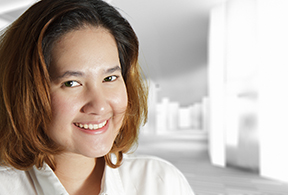 flash or an bounce reflector. The photograph to the right used supplemental flash because she has a bright sunlight room behind her. Is it sunset or high noon. Are you taking a landscape photograph of a snow covered meadow? Learn to look at the light and learn how to create photographs in various lighting situations.
flash or an bounce reflector. The photograph to the right used supplemental flash because she has a bright sunlight room behind her. Is it sunset or high noon. Are you taking a landscape photograph of a snow covered meadow? Learn to look at the light and learn how to create photographs in various lighting situations.
 Learn to use your flash. If your friends’ faces all look washed out with red eyes you are probably too close to them when you took the photograph (as you see in the image of the three kids to the left). Professional photographers use a variety of techniques when using a flash. They bounce it off the wall, diffuse it and adjust the intensity so it is give the correct amount of light on the subject. Learning to use your flash can have a steep learning curve but you will be rewarded with higher quality photographs that you are proud of. Some cameras also allow you to adjust the flash exposure compensation and thereby increase or decrease the power of the flash.
Learn to use your flash. If your friends’ faces all look washed out with red eyes you are probably too close to them when you took the photograph (as you see in the image of the three kids to the left). Professional photographers use a variety of techniques when using a flash. They bounce it off the wall, diffuse it and adjust the intensity so it is give the correct amount of light on the subject. Learning to use your flash can have a steep learning curve but you will be rewarded with higher quality photographs that you are proud of. Some cameras also allow you to adjust the flash exposure compensation and thereby increase or decrease the power of the flash.
Learn to adjust the ISO of your camera. The ISO refers to how sensitive the digital camera’s sensor is to the light in the given scene. The higher the number the more sensitive it is to the light. For example a high ISO of 6,400 will allow you to take a photograph in lower light than a lower ISO like 200.
 Use the correct white balance or learn to set it on your camera. Most point and shoot cameras automatically adjust the white balance. However it is something you need to know about. Light has various color temperatures. For example, tungsten light is yellow and florescent light is greenish. Therefore if you set your while balance to match the lighting in the scene your are photographing the skin tones and colors in the scene will be correct. For example, if you are photographing someone in an interior location with fluorescent lighting you should set the white balance in your camera to “florescent” for correct skin tones.
Use the correct white balance or learn to set it on your camera. Most point and shoot cameras automatically adjust the white balance. However it is something you need to know about. Light has various color temperatures. For example, tungsten light is yellow and florescent light is greenish. Therefore if you set your while balance to match the lighting in the scene your are photographing the skin tones and colors in the scene will be correct. For example, if you are photographing someone in an interior location with fluorescent lighting you should set the white balance in your camera to “florescent” for correct skin tones.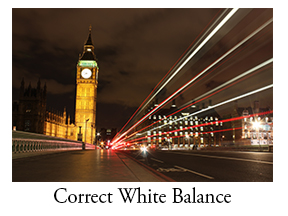
Learn how to control depth of field by using the correct aperture and focus point. This is a technique that is especially fun to learn and use!
Learn to post process and retouch. There are many, many different retouching programs available today to remove red eye, tweek the exposure, crop the image and do other basic retouching.However, many amateurs go overboard with retouching and the final image no longer appears natural.
Note: As a professional photographer I have shot with Nikon for my entire career and am totally sold on Nikon products. Therefore, if you were to ask me what camera you should buy, of course I will recommend a Nikon. Their customer service is top notch and I believe they make great cameras and lenses.
——————————–
Cynthia McIntyre is a professional headshot photographer with studios in CT, NY and FL. For more info visit her main website or CALL 203-364-1592










































